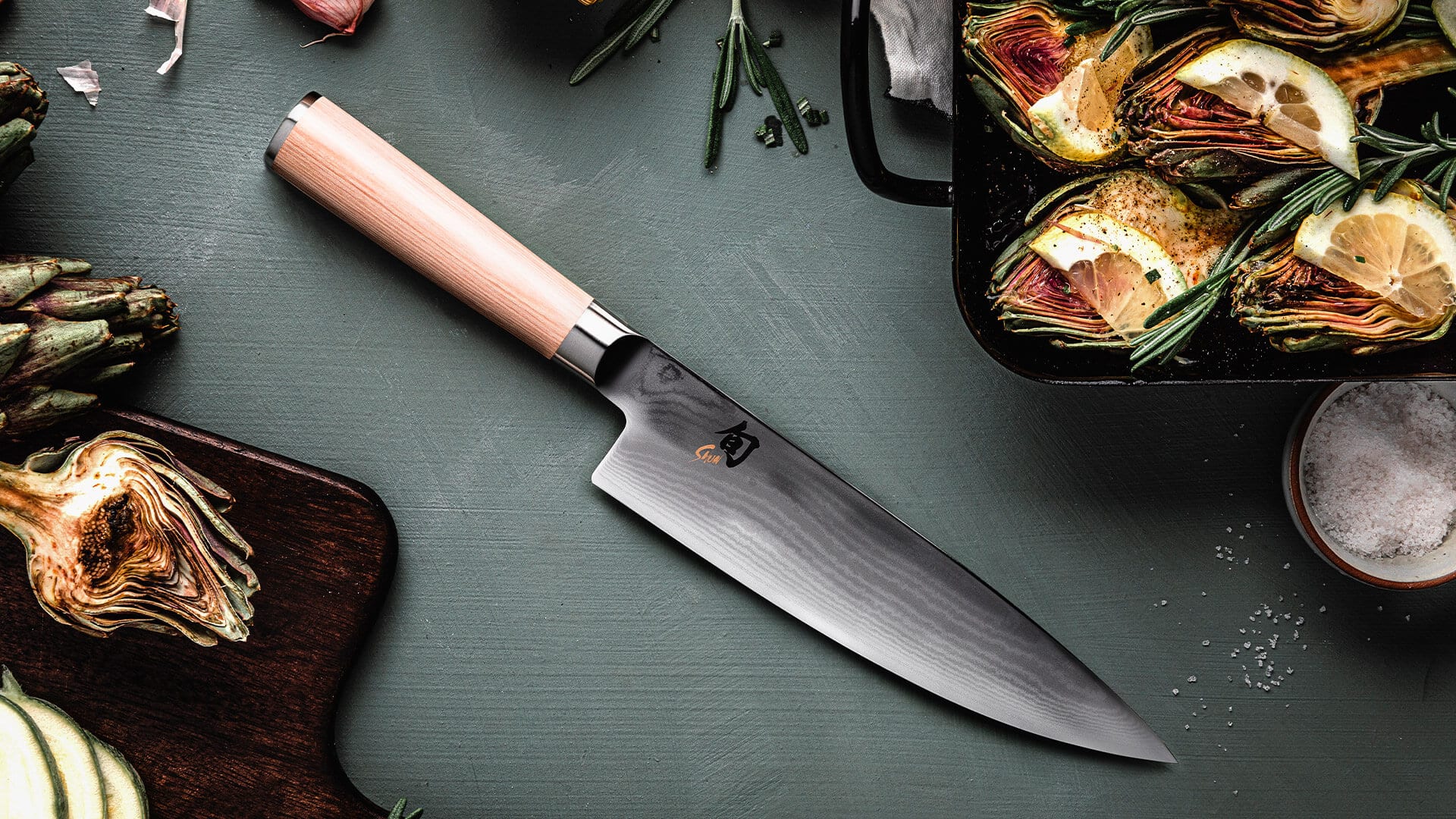What is a damask knife?
Damastmesser gehören zu den hochwertigsten Messern in den Küchen der Welt. Starköchinnen und -köche, Hobbyköchinnen und -köche schwören auf die hochwertigen Messer, die mit ihrer Funktionalität, ihrer ausgezeichneten Schärfe und ihrer Ästhetik überzeugen. Doch was zeichnet die Damastmesser eigentlich aus und was unterscheidet sie von anderen kitchen knives?
- What is a damask knife?
- Damascus knives - that's what sets them apart
- The advantages and disadvantages of damask knives
- For longevity: the special knife care
Worth knowing about knives made of Damascus steel
The damask knife is made of Damascus steel, which is why it is also known as a Damascus knife. Damascus steel consists of several layers of soft and hard iron, which are welded together. This creates a very high degree of hardness and the appropriate processing of the resulting blade gives the knife its considerable sharpness.
Around high quality damask knives To preserve it, the steel must be etched. Experts call this process “damascene. The greatest effort in making the Damascus knife is folding the steel. For this, the types of iron are heated and hammered out. Then the resulting package is cut lengthways and crossways, welded again and then hammered out again. The folding technique gives the high-quality kitchen knife its characteristic hardness. Depending on the damask knife, there can be up to 1,000 layers that are folded, welded and hammered out. The folding process creates a unique grain, which stands for the traditional manufacture of kitchen knives from Damascus steel.
This is characteristic of damask knives
These properties and features are typical of the damask knife:
- The blade has a beautiful and unique grain
- The blade is flexible, but at the same time very stable
- High quality damask knives are handcrafted
- The blade is usually relatively wide
Note: The term "damask knife" is not a protected term. This means that companies are allowed to refer to knives of inferior quality as damask knives.
For a high-quality damask knife, the minimum number of layers is 150. During manufacture, the steel for the damask knife is heated to at least 1,200 degrees Celsius. Only then can the steel be processed in a professional manner.
The pros and cons of Damascus knives
The advantages of the Damascus knife include the extreme sharpness of the blade and the possibility of easy re-sharpening. But the knife has other advantages, but also disadvantages.
The advantages of the damask knife:
- Durable
- Very good cutting results
- Extremely sharp blade
- Very hard but flexible knife blade
The disadvantages of the damask knife:
- Relatively high purchase price
- Not suitable for cleaning in the dishwasher
For longevity: the special knife care
You should clean the knife thoroughly after each use. Use a damp cloth with a mild detergent and rub it over the handle and knife blade. After rinsing, dry the damask knife thoroughly. A soft microfiber cloth is suitable for this. Then rub the blade and the wooden handle of your damask knife with a little oil to protect the knife.
Damascus knives must never be put in the dishwasher. The structure of the steel can change due to the temperature differences. In addition, the often very aggressive detergents can attack the blade. And the handle could also be damaged.
Damascus knives are not rustproof, which is why rust can form. However, you can make sure that the blade is not exposed to this hazard. Therefore, clean the knife by hand and dry it thoroughly. Subsequent rubbing in the blade prevents rust from forming.
Keep the damask knife on a magnetic strip or in a knife block. Never put the knife in the kitchen drawer or store it in a leather case. The salts used in tanning can damage the blade and encourage rust to form.
If there is some rust on the blade, remove it with a rust eraser. Using the eraser can leave small marks on the blade, which, however, are no longer visible and no longer present when the blade is polished.










